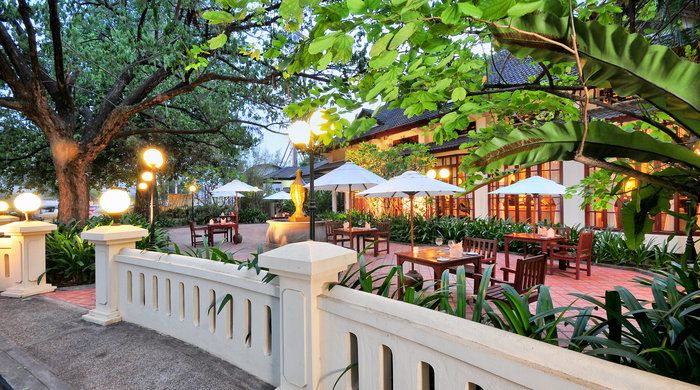Introduction
Vientiane is a quiet, yet charming, capital city that shares the same friendly, laidback air as the rest of Laos.
Nestled in a curve of the Mekong River on the border with Thailand, Vientiane, with its wide, leafy boulevards and colonial-era architecture is a world away from many other Asian capitals.
The town's appeal lies in the fusion of Asian customs and French colonial culture: spring rolls, Pho soup and papaya salad mixed with baguettes, black coffee and Bordeaux wines.
Patuxai Monument
Vientiane's best-known landmark is the monstrous Patuxai, or ‘Victory Monument'.
French connections are evident in the design of this grand monument, which resembles an Oriental version of the Arc de Triomphe in Paris. The Patuxai, or Victory Monument, is one of the city's best-known landmarks, and was built to commemorate those who fought and died in the struggle for independence from France.
Hor Phra Kaeo
Hor Phra Kaeo, or Wat Phra Kaeo is now a national museum. This former royal temple was built by King Setthathirat in 1565 to house Phra Kaeo, the Emerald Buddha, which it did until 1827 when the city was sacked by the Thais and the icon taken back to Bangkok.
The buildings suffered much damage during the raids but were sensitively restored, with a plaster of sugar, sand, buffalo skin and tree oil used for the interior walls. Statues of nagas (demon warriors) now stand guard. Assorted Khmer and Lao art is also on show.
Talat Sao
Talat Sao is a well-known morning market that opens at 7am each day. It's a good place to shop for local jewellery, silk scarves, embroidered cushions and wooden crafts, or just to people watch among the bustle of locals and tourists.
Wat Sisaket, Wat Simuang & That Luang
The national museum, Wat Sisaket, houses several thousand Buddha images, many in terracotta, bronze and wood, and is the only temple in the city that survived the Thai invasion of the 1820s - making it the oldest building in the city.
Another temple, Wat Simuang, contains the city's foundation pillar from 1563 and is considered by candle-lighting devotees to be the monastery that brings the best luck.
Meanwhile, the large gold-covered Buddhist stupa of That Luang is generally regarded as the most important national monument in Laos. Its reverential status is vividly demonstrated during the That Luang Festival, when monks travel from across the country to join pilgrims in chanting, praying and making offerings.








